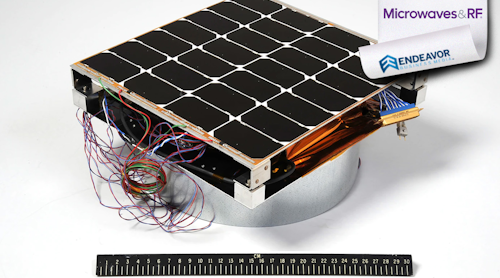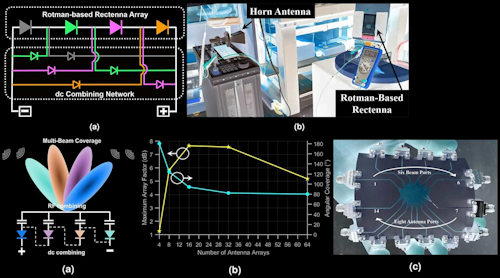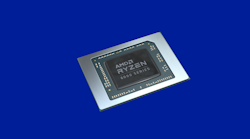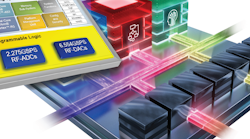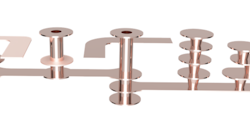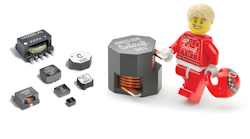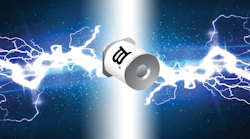Kinetic energy harvesting offers a universal way to harvest energy in engine compartments, simply due to the fact that vibration energy is always present in varying amplitudes. By using different conversion principles and an appropriate microelectronics system, this energy can be efficiently converted into electrical energy. However, the performance of energy harvesters greatly depends on their ability to adapt to the environmental source.
An automotive aim is to collect the energy generated by shock absorbers and reuse it to recharge the batteries. Recent advances in the development of ultra-low-power microcontrollers have enabled devices that offer unparalleled levels of integration over the power required for operation. In this way, power can be more effectively delivered if it accumulates from the mechanical, thermal, and electromagnetic energy available in the local environment. Collecting sources such as heat, light, sound, and vibrations could significantly impact economic and environmental factors, reducing costs and spawning new sensor technologies for the automotive industry.
Energy-Harvesting Transducers
Mechanical energy is present in nature in the form of various sources, such as vibrating structures or fluid that flows along those structures. Wherever there’s a mass, there’s also great potential for energy-harvesting applications.
1. In this block diagram of an electromagnetic-vibrational transducer, RLis the load and Bz is the direction of the magnetic field. Electromagnetic-vibrator transducers are able to convert vibration energy into electrical energy from 40 to 100 mW.
Transducers of various types carry out the collection of energy and convert it into electricity. The electromagnetic-vibrational transducers are based on Faraday's law. The motion of a coil, through a constant magnetic field perpendicular to it, generates an electric field capable of circulating an electric current in a load connected to the heads of the coil(Fig. 1)。压电传感器提供了更高功率密度的收集,这要归功于微机械系统(MEMS)实现的优势。
The maximum power that’s supplied to energy-harvesting devices depends on the frequency and acceleration of the vibrating system as well as the size of the device. Piezoelectric accelerometers are used most often, due to their high dynamics, small size, and immunity to noise factors. The reversibility of the effect is one of the piezoelectric’s main features—namely, the generation of electrical energy by means of a mechanical stress and vice versa.
2. The formula at the top left of this piezoelectric-transducer block diagram means the proportionality of the power obtained from the transducer with the deformation amplitude (δ) and mass (mp) of the material. Circumscribed by the dotted ellipse, it’s possible to observe the area under stress (strain) caused by the deformation of the material. This results in the formation of electric charges (Q) and electric energy (P).
Figure 2显示了压电传感器的工作原理。压电材料的特性特征使由于材料变形而成为机电转导。实际上,它们会响应外部机械应力而产生电信号。
具有压电转导的能量收获系统具有高反应性的输出阻抗。由于典型的压电可产生几毫瓦,因此IC系统设计人员已转向许多非线性方法,以提高电源而没有大型间接费用。一种典型的方法称为对电感器(SSHI)上的同步切换收获,该收获涉及每个周期两次对压电材料上的电荷极性逆转(Fig. 3)。
3. A potential difference is generated to the extremities of the junction surface in this illustration of the Seebeck effect, resulting in an electric current that’s proportional to the temperature differential of the two surfaces (hot and cold).
热电传感器通过“ Seebeck效应”现象将热能转换为电力。热能主要在工业部门(机械,管道和车辆),建筑物中以及人体中,始终有热梯度(Fig. 4)。
4. This synchronous switched harvesting on inductor (SSHI) circuit uses a rectifier for the piezoelectric transducer.
When two conductors are at different temperatures, a potential difference is produced between the two ends. The voltage (V) generated between the two junctions depends on the material and the temperature through the first equation below as a function of the Seebeck coefficient (S). The second equation represents maximum power collection.
A represents the section of the material, ρ the resistivity of the material, and l the length of the sensor; T indicates the temperatures of the hot (h) and cold (c) surface.
The direct conversion of solar energy into electricity, realized with the photovoltaic cell, uses the physical phenomenon of the interaction of light radiation with valence electrons in semiconductor materials, called the photovoltaic effect.
In the single cell, the photocurrent generation coexists with the mechanisms that regulate the normal flow of current in a p–n junction to vary the voltage at its ends. The photocurrent has an intensity that depends on many factors: radiation, angle of incidence, temperature, and types of semiconductor materials(Fig. 5)。
5. In this equivalent circuit of a photovoltaic cell, the typical output voltage of a cell is about of 0.5 to 0.6 V. Typical values of photocurrent for a cell are approximately 30 mA/cm2。
Power-Management Circuit and Storage
Designing a power-management system for a device that collects energy from different environmental sources can be rather difficult. These sources, from solar to vibrational, passing through that heat, are small amounts of energy that vary unpredictably. This creates a significant challenge for a power-management system that needs to work efficiently and deliver a steady output.
The piezoelectric transducers operate with an output voltage of some millivolts (1 to 10 mV), which changes in accordance with the environmental conditions and materials used. Different power management circuits, such as a boost converter, are used to limit the oscillations.
6. Shown is a general energy-harvesting system, in which a rectifier and capacitor are used to convert ac energy into dc. A voltage regulator helps to adapt the voltage level to the requirements of the powered devices.
A buck/boost converter is an architecture suitable for harvesting energy for various artificial/environmental sources, from motion or vibration through a piezoelectric transducer passing through RF energy. In an energy-harvesting system, the output voltage isn’t constant in time(Fig. 6)。
It’s very important to keep the energy constant over time, just as in photovoltaic devices. The goal is to provide a way to compute the initial storage element charge before commissioning energy that’s needed to supply the load. Supercapacitors, also known as ultra-capacitors or electrochemical capacitors, have enabled an alternative mode for energy-storage technologies(图7).
7. A supercapacitor is characterized by two electrodes and an ion-permeable separator placed between the electrodes.
从环境中收集能源是一种在各种电子设计中延长电池寿命的方法。当系统处于睡眠模式时,少量能量可以提供更多的功率并延长电荷的寿命,而不必每12小时充电一次小电池。能源收集也将在汽车应用中增长,并通过RF能量收集在与蜂窝电话的移动通信中增长。
In the automotive sector, energy harvesting has a potential role to play in two broad areas. The first is related to small wireless sensor networks for managing some parameter of road safety. The second is related to the charging of the batteries in distributed energy-storage systems for electric and hybrid vehicles. With hybrid and electric cars, the trend toward energy harvesting by thermal and vibration sources represents a new way for the free energy in the automotive systems.


